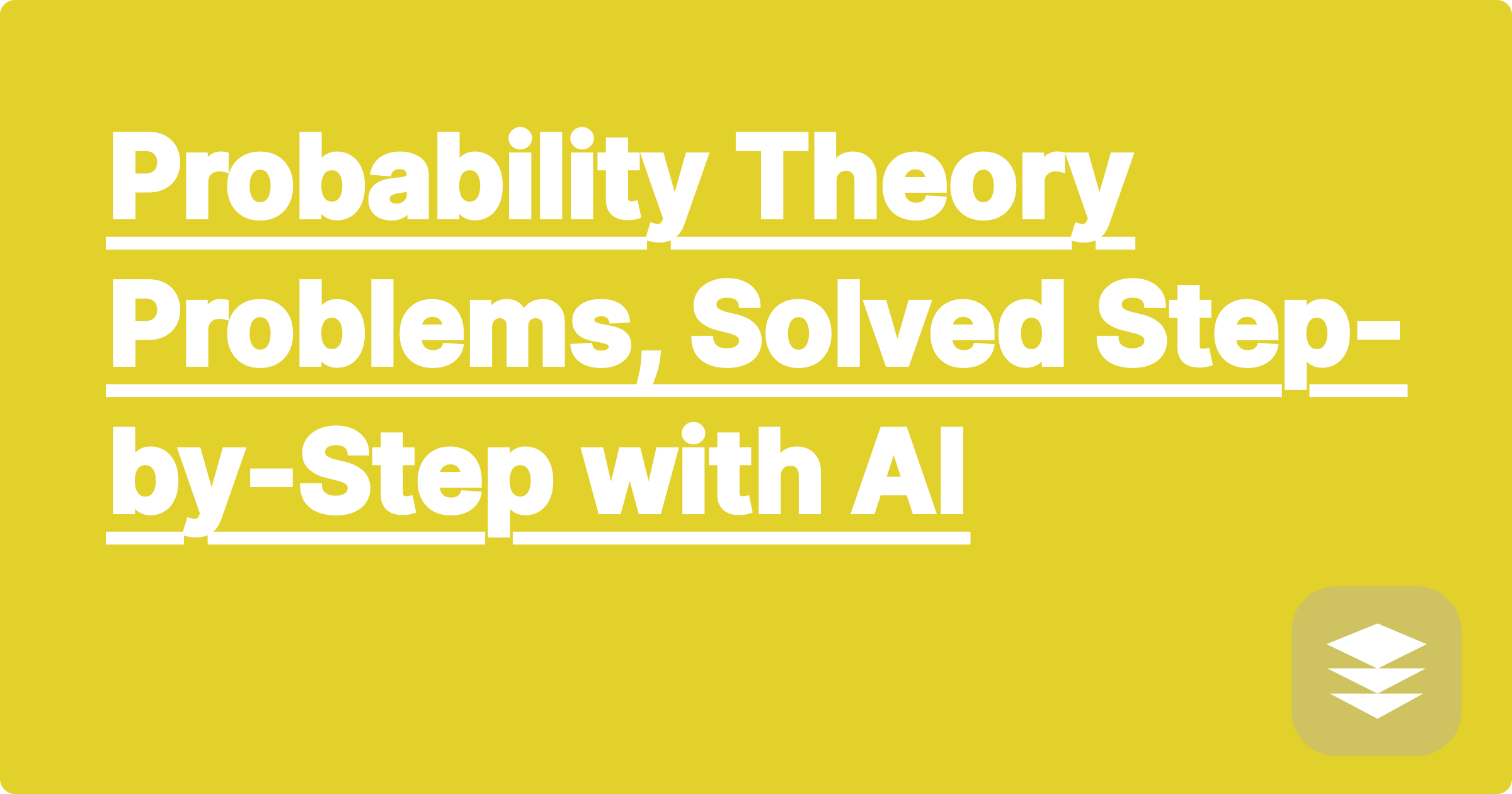
Probability theory is the foundation of statistics, machine learning, and risk analysis. At first, the concepts seem intuitive—flipping coins and rolling dice. But the course quickly moves into more complex and less intuitive territory: combinations and permutations, conditional probability, and the famous Bayes' theorem.
A single probability problem can require you to choose the right formula, carefully define your events, and perform meticulous calculations. It's easy to get lost, especially when dealing with problems that seem counter-intuitive.
This is where a probability problem solver becomes an essential study tool. An AI assistant like GPAI Solver can not only perform the calculations accurately but also show you the logical setup for each problem, including acting as a powerful bayes theorem calculator.
Let's see how an AI can break down a complex conditional probability problem.
The Problem: "A standard deck of 52 cards. You draw two cards without replacement. What is the probability that you draw two aces?"
GPAI Solver's Step-by-Step Solution:
This clear, logical breakdown makes the concept of conditional probability easy to follow.
Bayes' theorem problems are all about organization. An AI can act as the perfect organizer.
The Problem: "A certain medical test is 99% accurate for people who have a disease and has a 5% false positive rate. If 1% of the population has the disease, what is the probability that a person who tests positive actually has the disease?"
GPAI as a Bayes Theorem Calculator:
This structured approach removes the confusion and allows you to focus on the logic.
The AI's capabilities extend across the entire probability curriculum. You can ask it to:
A deep understanding of probability is essential for a future in statistics, data science, or machine learning. Don't let the tricky word problems or counter-intuitive concepts hold you back. By using an AI solver to check your work, break down problems, and explain the logic, you can build the solid foundation you need for success.
[Stuck on a probability problem? Try GPAI Solver today. Get the step-by-step help you need to master everything from combinations to Bayes' theorem. Sign up now for 100 free credits.]
Abstract Algebra Explained: How AI Can Help You with Group Theory
Mastering Real Analysis: An AI Tool for Proofs and Theorems
Your Personal AI Assistant for Statistical Analysis in R or Python
Probability Theory Problems, Solved Step-by-Step with AI
From Data Set to Insights: How AI Can Automate Your Stats Project
The Ultimate Guide to Mathematical Proofs with AI Assistance
Surviving Numerical Methods: An AI for Root-Finding and Integration Algorithms
Topology for Beginners: How AI Can Help Visualize Abstract Spaces
How to Create the Perfect Cheatsheet for Your Statistics Final
The Future of Mathematics: How AI is Changing How We Learn and Discover